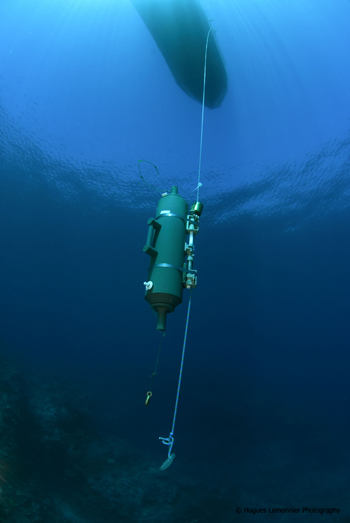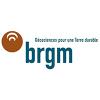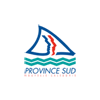SEARSE
For over 20 years, New Caledonia has been recognised as a global biodiversity hotspot possessing one of the world’s highest concentrations of endemic species. New Caledonia is encircled by the world’s largest coral reef complex.
Current economic, demographic and social changes in New Caledonia mean that coastlines and coastal environments are subject to increasing human-induced pressures.
The rivers play a key role in transporting sediments and dissolved constituents. Although these sedimentary loads are essential to the dynamics of coastal ecosystems, excess amounts may be harmful (nutrients, trace metals and other contaminants).
The SEARSE project aims to:
• qualify and quantify sedimentary loads carried by rivers;
• track them as they form sediment plumes in the lagoon around the Greater Noumea area;
To this end, analyses targeting concentrations of dissolved and particulate matter at outflows will be carried out, and the fate of sediment plumes in the lagoon environment around Greater Noumea will be monitored.
The SEARSE project will use the deterministic GR4J rainfall-runoff model, developed in 2017 by the LEAD team, and the Mars 3D hydrodynamic model developed by IFREMER.
Project duration 32 month(s)
Associated program

Responsable scientifique
Laboratoire LEAD
New Caledonia is a vast territory possessing an exclusive economic zone (EEZ). Its maritime area comprises a variety of coral reef formations, lagoon areas, mangroves and very extensive expanses of ocean and seas.
New Caledonia’s exceptionally preserved marine biodiversity was recognised by the 2008 inscription of a majority of the lagoon and reef systems as a World Heritage Site (UNESCO).
For over a century, the mining industry has played a significant role in shaping the country’s landscapes and coastlines but there is an increasingly strong commitment to diversifying the economy and developing tourism and other sectors by leveraging factors such as the country’s attractiveness.
The vulnerability of these tropical ecosystems is a key issue both in terms of research and in terms of the challenges of achieving sustainable management (Territorial Innovation Strategy, 2015).
Any assessment of the environmental status of marine ecosystems must take into account the various human-induced pressures on the environment.
The fact that there is currently no quantification of human-induced pressures makes it very difficult to reach a clear understanding of the structuring processes which affect the integrity of this natural heritage and the related ecosystem services.
Adopting an ecosystem approach is vital to the implementation of an Integrated Coastal Ecosystems Management (ICZM) system.

Ultimately, the SEARSE project should make it possible to:
• model the fate of dissolved compounds in the marine environment;
• analyze the fate of some contaminants in the marine environment;
• provide data allowing hydrologic landscapes in the lagoon around Greater Noumea to be defined and mapped.
With the goal of reaching a clearer understanding of:
• ecosystem functioning in New Caledonia’s lagoon;
• connectivity between lagoon fish communities;
• initial sources of trace metal accumulation in the food chain.
The SEARSE project aims to conduct:
• analyses of concentrations of dissolved and particulate matter at 4 outflows: the Dumbea, La Coulée, Rivière des Pirogues and Tontouta rivers;
• monitoring of sediment plumes in the lagoon environment around Greater Noumea.
Analyses will identify essential characteristics for each river and quantify sedimentary loads carried by rivers into New Caledonia’s lagoon:
• total suspended solids (TSS)
• nutrients (ammonium, nitrates, phosphates and silicates)
• metals (Cr, Ni, Fe, Mn, Cu, Zn and Al),
• nitrogen, carbon and phosphorus,
• organic material in dissolved and particulate form (including COD, CDOM and FDOM),
• biological particles (bacteria and phytoplankton).
The monitoring process aims to:
• establish maps of hydrological landscapes;
• estimate the influence of fluvial loads on these landscapes.


Copyright Hugues Lemonnier
The SEARSE project will conduct analyses based on the deterministic GR4J rainfall-runoff model to quantify sediment exports of dissolved and particulate matter from rivers.
This model, developed in 2017 by the IFREMER LEAD team, is designed to estimate river flows on an hourly time-step, from rain data.
These analyses were conducted in four Greater Noumea catchments (Desclaux et al., 2018).
A 300-m hydrodynamic model was developed around the Greater Noumea area to analyse the fate of river outflow waters.
Analyses will be linked to data rates from the GR4H model, with water characteristics at the 4 outflows (Dumbea, La Coulée, Rivière des Pirogues, La Tontouta).
The purchase of drifting buoys will allow tracking of the fate of the plumes and various materials that make up the lagoon.
There will be a special focus on the fate of genetic and functional diversity in microorganisms, excellent markers of environmental changes in the plumes.
This research work will be carried out as part of the assignment of an IFREMER expert from France.
Progress report on the monitoring of rivers at outflows in the south of New Caledonia, available at: https://archimer.ifremer.fr
Boher L., Coignot E., Lopez E., Royer F., Lemonnier H., 2018. Monitoring fluorescent organic materials upstream from estuaries in the south of New Caledonia. End of contract report CSD IFREMER-LEAD. p. 38
Mot-Clé(s): Rivières, Matière organique fluorescente, dynamique
The workshop of the programm "Au fil de l'eau" took place on 17 and 18 September 2019, at the UNC.
Tuesday 18 September was dedicated to the intermediate results of the "Au fil de l'eau" program (whose presentation is available on the french's page of the project). This restitution day was an opportunity to exchange on the various projects that make up the program, between research professionals, actors from the public, private and associative sectors working on these themes.
Les 28 et 29 mars 2022, le CRESICA organisait le séminaire "Au fil de l'eau" qui a permis de présenter les résultats du projet.
Rapport final : projet SEARSE
Visionnez la présentation faite lors du séminaire grâce à la vidéo du projet SEARSE par H. Lemonnier.















